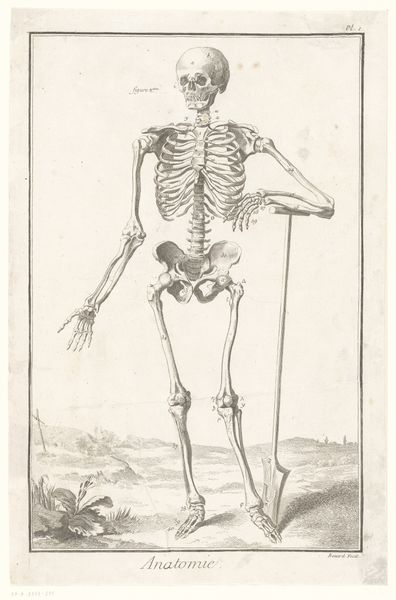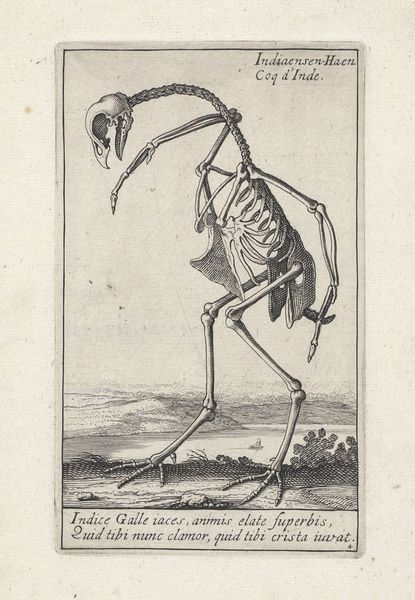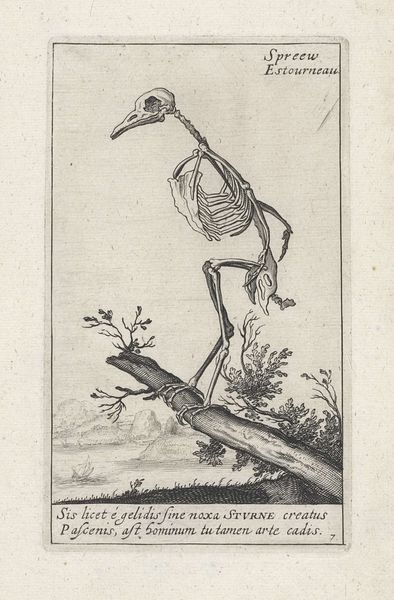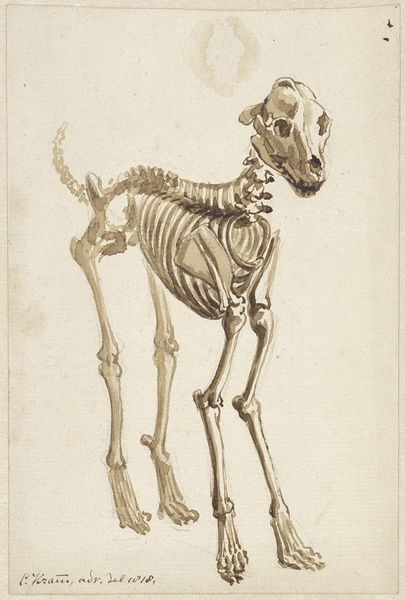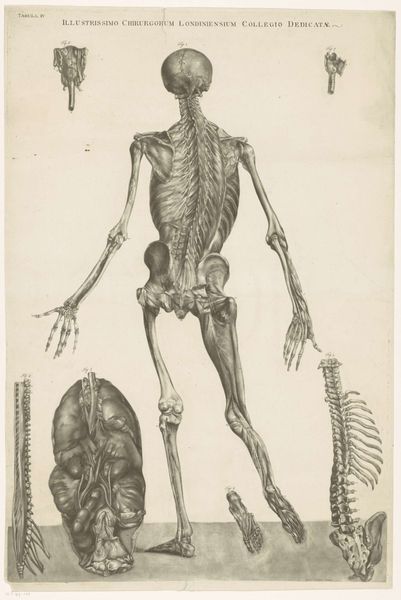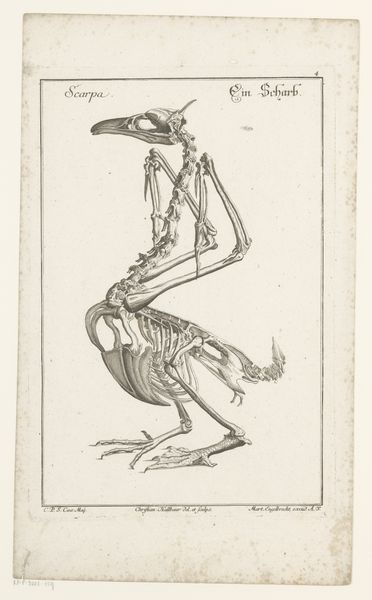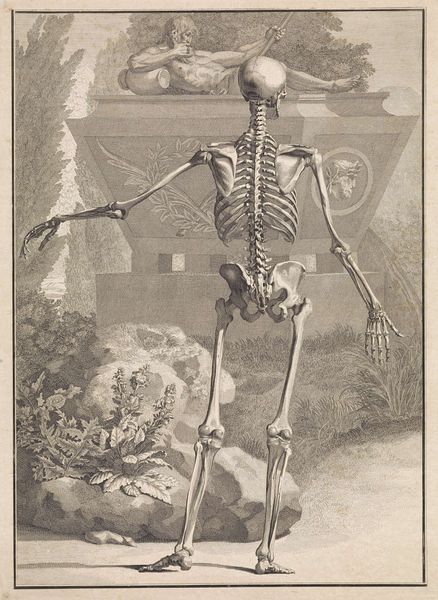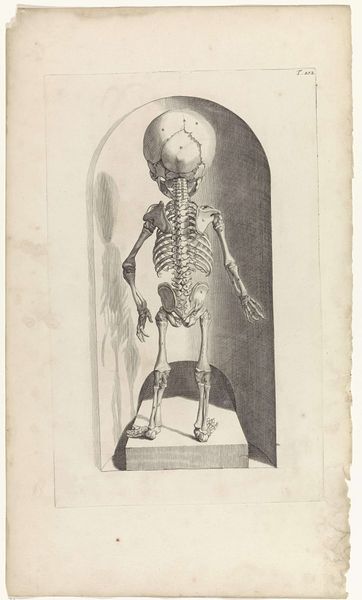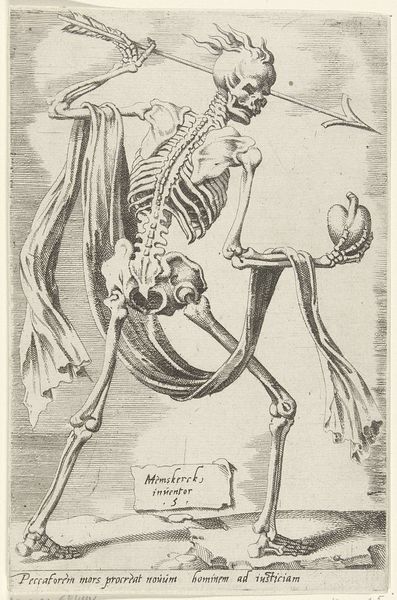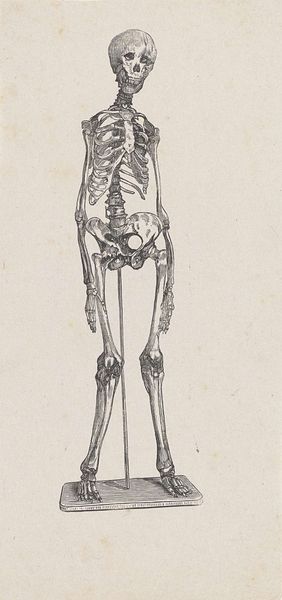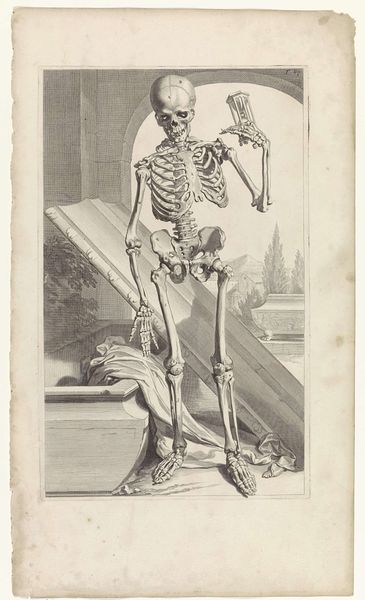
print, engraving
#
baroque
# print
#
figuration
#
history-painting
#
academic-art
#
engraving
#
realism
Dimensions: plate: 56.2 x 40.2 cm (22 1/8 x 15 13/16 in.) sheet: 65.1 x 46.7 cm (25 5/8 x 18 3/8 in.)
Copyright: National Gallery of Art: CC0 1.0
Curator: This detailed engraving is entitled "Musculorum Tabula VIII" by Jan Wandelaar, created around 1742. Editor: It strikes me immediately as quite stark, a curious juxtaposition of delicacy and the brutal reality of anatomy. The skeletal figure, rendered with such meticulous precision, is oddly vulnerable against the looming presence of what I believe is a rhinoceros. Curator: Indeed, it’s fascinating to consider the artistry inherent in scientific illustration. Wandelaar, an accomplished engraver, displays extraordinary skill here. Observe the finely etched lines; they articulate every ridge and curve of bone with remarkable fidelity. The medium, engraving, becomes crucial, facilitating a replication of the image for broader dissemination. Editor: Yes, but isn't the image as much about labor as artistic skill? Someone meticulously crafted the copperplate. Each line a physical act, echoing the hard labor of the tanner transforming raw hide into the material for these engraved sheets, paper and inks created in mills and work shops, a truly handmade image! Curator: But do we not see a strategic construction? The contrapposto of the skeleton introduces a subtle dynamism, leading the eye upward along the spinal column to the implied vanishing point. There's also the positioning of the rhinoceros – partially obscured, perhaps symbolizing the limits of contemporary knowledge regarding exotic fauna. Editor: I'd agree about limits, there seems to be some imaginative liberties there in regards to the representation of the rhino - clearly informed by textual descriptions rather than the real animal, a collision of natural philosophy with artisanal knowledge, the skills and interpretations of those creating an "objective" image! Curator: It embodies the intersection of art and science prevalent during the Baroque era. We are witnesses to the period’s interest in exploring human anatomy through both an aesthetic and an empirical lens. Editor: A confluence perhaps – where meticulous production practices meet the aspirations of scientific documentation? In a way, the making mirrors the act of dissection itself: a layer-by-layer reveal. Curator: An intriguing image, laden with anatomical and artistic considerations. Editor: Precisely. This is no mere picture; it is evidence of intersecting knowledge.
Comments
No comments
Be the first to comment and join the conversation on the ultimate creative platform.
